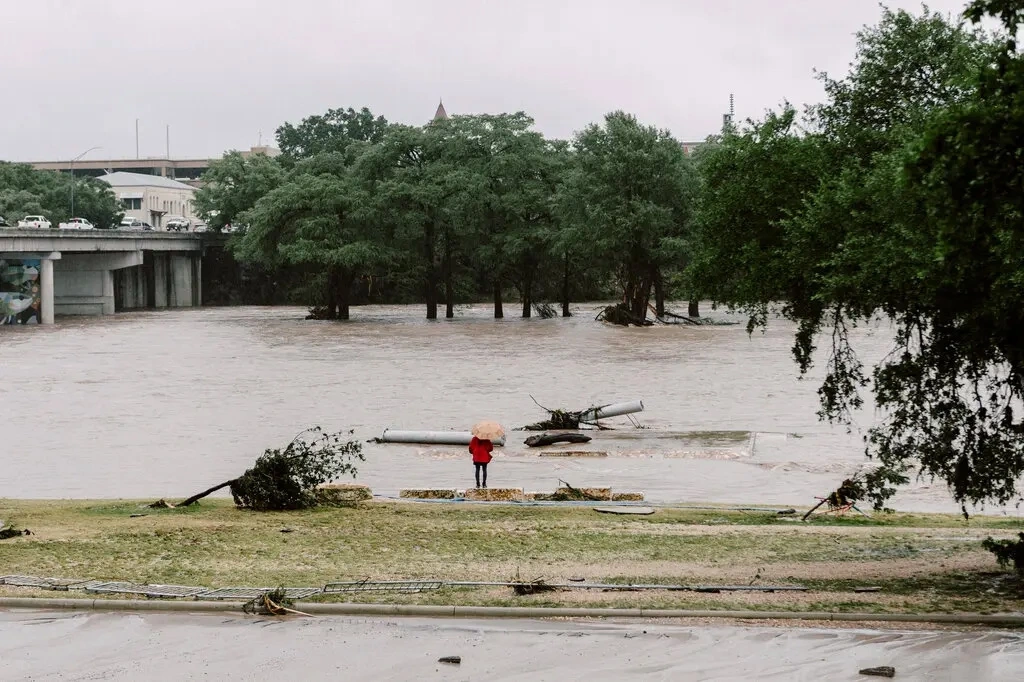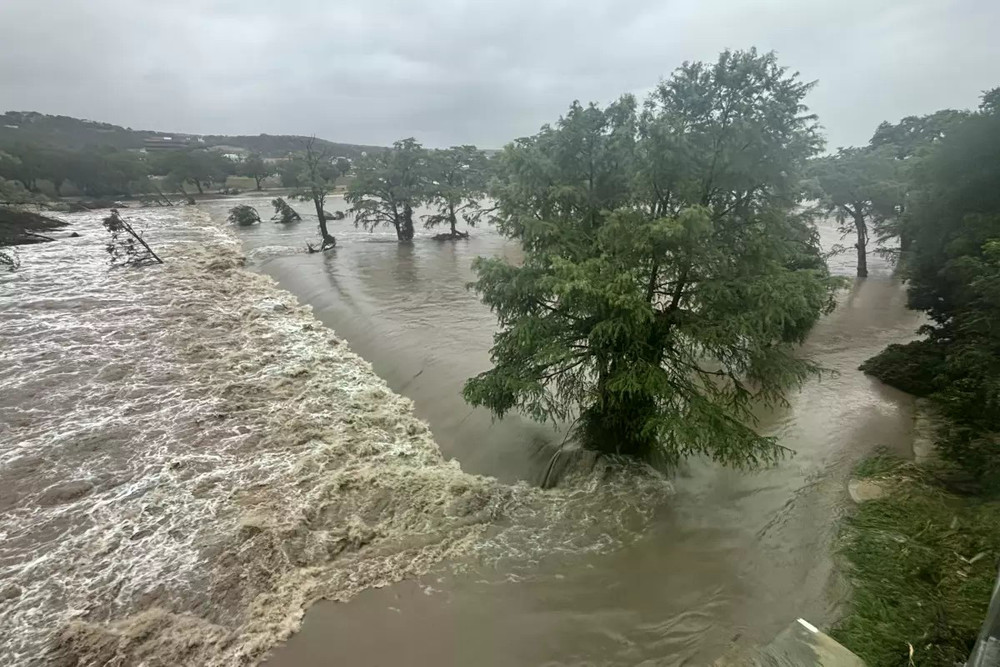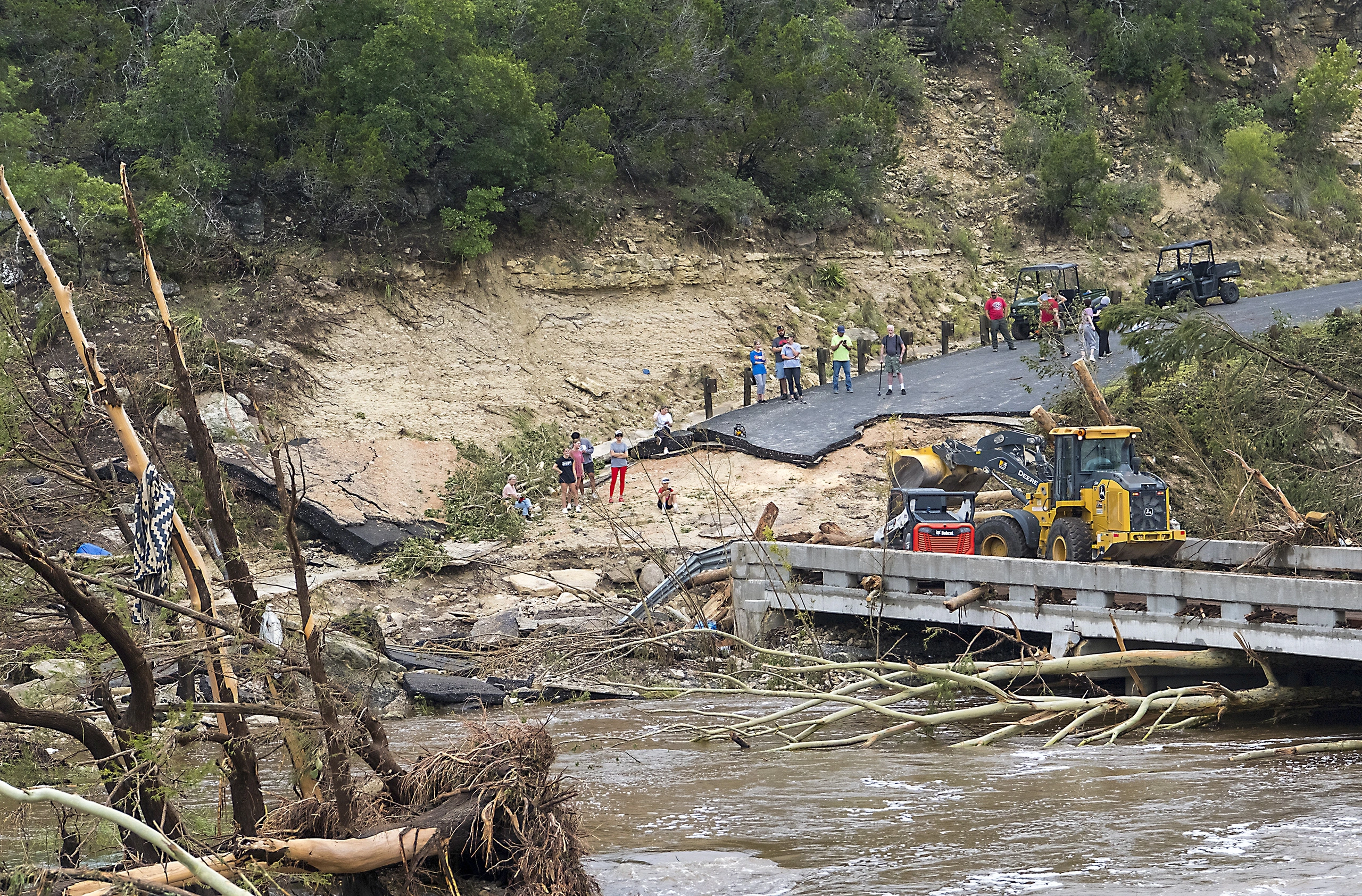Texas Flash Flood Tragedy: At Least 6 Dead, Multiple Campers Missing Following Historic Floods

Texas Flash Flood Tragedy: At Least 6 Dead, Multiple Campers Missing Following Historic Floods
In what is being called one of the most devastating natural disasters to hit central Texas in recent years, heavy rains triggered catastrophic flash floods along the Guadalupe River, resulting in the tragic loss of life and leaving several children missing from summer camps located along the river. As of the latest reports, at least six people have been confirmed dead, while numerous others, including children from various summer camps, remain unaccounted for. The rains, which started late on the night of July 3rd, 2025, led to an unprecedented spike in water levels along the river, and the situation continues to unfold as authorities launch a large-scale rescue and recovery operation.
The Storm That Caught Texas Off Guard
The events began on the night of July 3rd, when a significant weather system brought intense rainfall to the region, dumping between 120 to 250 millimeters of rain in just a few hours. This extreme precipitation overwhelmed the Guadalupe River, especially in the area surrounding the city of Kerrville, where several summer camps are located. The combination of heavy rains and the river’s swelling waters resulted in flash floods that swept through the area, catching many residents and campers off guard.
According to local meteorologists, this was a rare and powerful storm system that produced rainfall in amounts that were more than double what the area would typically see during a summer month. By the morning of July 4th, the river’s water levels had risen to dangerous heights, and many campers, who had been enjoying the summer activities, found themselves trapped by rapidly rising floodwaters.
The Immediate Aftermath: A Race Against Time
As soon as the rain began falling heavily, local authorities knew they were facing a severe weather event, but no one could have anticipated the magnitude of the flooding. By the time the waters reached their peak, it was clear that central Texas was facing a catastrophe. Emergency responders immediately sprang into action, trying to help evacuate residents and provide aid to those in distress.
Among the worst-hit were the summer camps located near the Guadalupe River. The Mystic Summer Camp, a popular destination for children, saw several of its campers stranded as the floodwaters rapidly overtook the campsite. According to camp organizers, the floods moved quickly, making it impossible for the staff to get the children to safety in time. Many of the campers were from out-of-state and had arrived just days before the storm hit.
At least one camp counselor reported that the situation became life-threatening within moments, with the rising waters forcing campers to climb trees and cling to whatever floating debris they could find to stay out of the water. Other campers were swept away by the powerful currents, and efforts to rescue them became increasingly difficult as the floodwaters surged. Rescue teams began arriving by helicopter, boat, and on foot as they worked tirelessly to locate the missing and evacuate survivors.
Local authorities have confirmed that at least six people have died in the disaster, including one adult and five campers. The identities of the victims are still being confirmed, with several bodies still being identified through fingerprint recognition, as many of the victims did not carry identification when they were found.
Rescue Operations and Emergency Response
As the floodwaters continued to rise and the situation became more dire, Texas Governor Greg Abbott declared a state of emergency and called for a full-scale rescue operation. The National Guard, Marine Corps, and local police forces were mobilized to assist with rescue efforts. Teams of first responders, firefighters, and search-and-rescue teams quickly formed in the affected areas, with specialized units dispatched to assist in retrieving survivors from submerged areas.
Emergency teams faced severe challenges due to the ongoing rainfall, which made it impossible to fully assess the extent of the damage. Water levels remained dangerously high, and the strong current made it difficult for rescuers to reach some of the more isolated areas, especially where the camps were located. The search for missing children and adults continued into the night, and authorities warned that the death toll could rise as more bodies are recovered from the waters.
In addition to the National Guard and Marine Corps, the Texas Department of Public Safety (DPS) issued warnings to residents to avoid the flood zones, urging anyone who lived in low-lying areas to evacuate immediately. Local hospitals were placed on high alert, with emergency rooms bracing for a potential influx of casualties.
By the morning of July 5th, two emergency shelters had been set up to provide food, shelter, and medical aid to displaced families and flood victims. Many families, particularly those whose children were attending the camps, remained in a state of uncertainty, awaiting news of their loved ones.
A Heart-Wrenching Story of Campers and Families
One of the most heartbreaking stories to emerge from the flood was that of the missing children from the Mystic Summer Camp. The camp had been in operation for over a decade, offering a variety of outdoor activities for kids aged 7 to 17. According to camp organizers, the camp was running a nature exploration program when the floodwaters hit. With many of the campers having arrived just days earlier, the flood came as a devastating shock.
Parents whose children were attending the camp have expressed deep concern and confusion, with some even taking to social media to ask for help finding their children. “I just want to know if my daughter is safe,” one parent said in an emotional video posted online. “We’ve been in touch with the camp, but no one seems to know where she is. She’s only 12, and I just want her home.” As rescue teams continue to search for the missing, many families are holding their breath, hoping for a miracle.
Camp staff members have been working closely with emergency responders, providing as much information as possible to aid in the search efforts. However, some camp officials have expressed concern about the difficulty of identifying the missing children, as many of them were unable to carry identification with them when they were evacuated to higher ground during the initial stages of the flood.
The Role of Local Authorities and Ongoing Recovery Efforts
In the aftermath of the flood, local authorities are working on several fronts to address the immediate crisis and begin recovery efforts. The Texas Division of Emergency Management has established a task force to assess the extent of the damage across the region, with particular focus on the areas hardest hit by the floods, including the towns of Kerrville, Fredericksburg, and Comfort.
As recovery efforts continue, residents in the affected areas are being asked to remain vigilant, as more rainfall is expected to continue throughout the weekend. Forecasts suggest that additional showers and thunderstorms could exacerbate flooding, particularly in areas already affected by the initial round of rains. The National Weather Service has issued flood warnings for several regions, urging residents to avoid driving through flooded areas and to relocate to higher ground if they live in flood-prone areas.
Governor Greg Abbott has vowed that Texas will rebuild, but the emotional toll on the residents of the affected communities will take time to heal. “Our hearts go out to the families who have lost loved ones, and to those who are still searching for their children,” Abbott said in a statement. “We will continue to provide all the resources necessary to help these communities recover.”
Looking Ahead: Preventing Future Disasters
In the wake of the disaster, many local officials and climate experts are calling for a closer look at how Texas handles extreme weather events and flood management. Central Texas has experienced more extreme weather patterns in recent years, with an increase in both severe droughts and intense rainstorms. The flooding in Kerrville and surrounding areas has prompted calls for better infrastructure and more robust flood control systems.
While the short-term focus remains on rescuing those still trapped in the floodwaters, long-term planning and preparation will be critical to prevent such a tragedy from occurring again in the future. Local officials are already discussing potential improvements to flood management infrastructure, including better drainage systems, flood barriers, and expanded emergency alert systems.
The Path to Recovery and Healing
As central Texas begins to recover from this devastating flash flood disaster, the road ahead will be long and challenging. The search for missing campers continues, and the emotional scars of the families who lost loved ones will take time to heal. However, the sense of community, resilience, and the tireless efforts of emergency responders will be central to the recovery process.
For now, Texas remains in a state of emergency, with authorities urging residents to stay safe, follow official guidance, and continue supporting one another through the difficult days ahead. As floodwaters recede, the real work of rebuilding lives and communities begins.
In the coming weeks, as rescue teams continue to search for survivors, and as the state begins its recovery efforts, it will be important for the people of Texas to come together and support one another through this unimaginable tragedy. The state’s resilience in the face of adversity will be a testament to the strength of its people, and the community’s determination to rebuild and heal.











